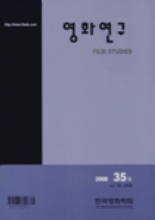- 영문명
- A Supreme Voyeuristic Trilogy of Aflred Hitchcock
- 발행기관
- 한국영화학회
- 저자명
- 김시무
- 간행물 정보
- 『영화연구』제35호, 285~320쪽, 전체 36쪽
- 주제분류
- 예술체육 > 예술일반
- 파일형태
- 발행일자
- 2008.03.31

국문 초록
영문 초록
In this thesis I deal the theme of voyeurism in films of Alfred Hitchcock. It is commonly agreed among critics that Alfred Hitchcock is a master of suspense, the premier technician of the classical narrative cinema. According to Andrea Gronemeyer, Hitchcock's idiosyncratic personal style, his detailed psychologizing of the typical thriller motifs, and his masterful manipulation of the filmic technique to produce suspense and surprise became trademarks for the suspense film genre and had considerable impact on the development of the cinema. It can be argued that Hitchcock's 'greatness' comes only from the accident that his recurring obsession with voyeurism is the topic which best meshes with the ontology of the filmgoing experience. It would be agreed among the scholars and critics that Rear Window, Vertigo, and Psycho are seen as a supreme voyeuristic trilogy. The peeping Toms in these films progress through ever - greater distress - from the broken-legged James Stewart with his telephoto lens in Rear Window through the psychotic Anthony Perkins with his motel peephole in Psycho. Stewart' s Scotty Ferguson is a kind of peeping Tom in Vertigo, because he eavesdrops the woman named Madeleine whom he was hired to protect and with whom he's fallen in love. In Rear Window(1954), Hitchcock explored the theme of voyeurism, applying it both to characters in the narrative and to audiences watching the film. The rear window looks out from a small apartment crowded Greenwich Village, New York City. There a freelancer traveling photographer named L. B. Jeffries (James Stewart) is confined to a wheelchair, his leg immobilized in a heavy plaster cast after a serious injury sustained while on assignment. The action of the film is largely restricted to the apartment of the main character Jeff. He begins to eavesdrop on his neighbors through the windows of their apartments across the courtyard. During the film, the photographer, Jeff, comes to believe that a murder has been committed by one of his neighbors, a salesman named Thorwald (Raymond Burr). In the sequence, Jeff hears a mysterious scream during the night and then sees Thorwald suspiciously going in and out of his apartment, carrying a large suitcase. What are the contents of the suitcase? Of course, they are the dismembered pieces of Thorwald's wife. The limited visual field of a photographer, who observes his neighbor and a murder through his zoom lens from an immovable point, becomes the dominating perspective in Rear Window, and identifies the hero's voyeurism with that of his audience. Vertigo(1958), a complex tale of detection, murder, and madness, was Hitchcock' most intensely personal, romantic, and poetic creation. A former police detective who's developed a pathological fear of heights since being responsible for the fatal fall of a fellow officer, Scotty is institutionalized for a year in the middle of the film after assuming that his 'weakness' prevented him from the suicidal leap of Madeleine. After a year, Scotty has met a woman named Judy who reminds him of his dead love. In Fact, she is the same woman- her fabricated 'death' having been the cover for a man's murder of his wife. Scotty tries to make the woman resemble her previous incarnation. The film ends at the moment of her 'second' death. One of Hitchcock's masterpieces, Psycho(1960), proved to be his most influential. This story of murder, madness, and perversion at a seedy roadside motel was a calculated exercise in audience manipulation in which Hitchcock wanted only to make his viewers scream. He succeeded brilliantly. In the opening camera movement of the film, Hitchcock makes us aware of being voyeurs: the camera in fact does what the moviegoer has just done, as it moves from a bright exterior into a dark room, finds an empty chair, moves over, 'sits' in the chair and looks up - to see half-naked lovers.
목차
1. 눈에 대한 정신분석학적 모델
2. 관음증 개념의 영화적 구현 〈이창〉
3. 관음증의 전경화〈현기증〉
4. 상징계를 교란하는 실재의 응시〈싸이코〉
5. 글을 나가며
해당간행물 수록 논문
참고문헌
최근 이용한 논문
교보eBook 첫 방문을 환영 합니다!

신규가입 혜택 지급이 완료 되었습니다.
바로 사용 가능한 교보e캐시 1,000원 (유효기간 7일)
지금 바로 교보eBook의 다양한 콘텐츠를 이용해 보세요!


